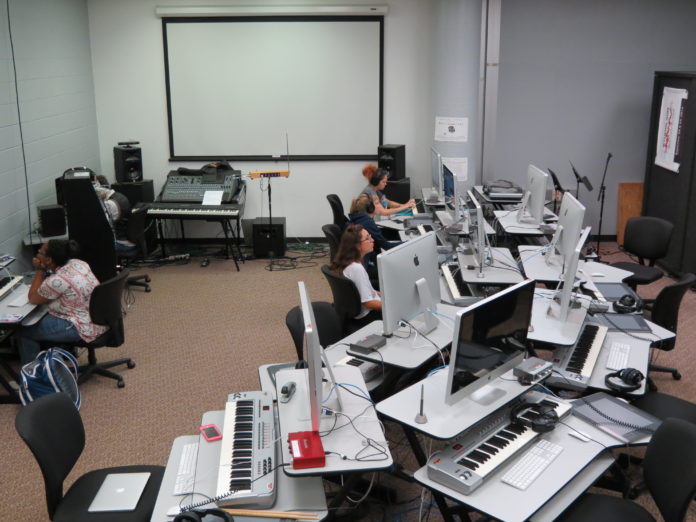This fall, Transy students are now offered a new minor in Digital Arts and Media. This minor, created by Dr. Timothy Polashek, Dr. Kerri Hauman and Professor Kurt Gohde was designed for all students, as it is an interdisciplinary minor.
Polashek explained that the minor was created because students from all disciplines and majors were interested in taking classes in the DART Lab.
“They like technology and they like learning how to express themselves for either communication or artistic purposes,” he said. “If somebody were minoring in this and they were interested in digital art, they could learn the audio from the music courses and the imaging and video from the art courses, and they’d also learn the digital rhetoric from the WRC course, so that would help them with whatever artistic thing they’re doing.”
As an interdisciplinary minor, students from all fields of study can benefit from this new program.
“If they’re interested in journalism, then they can learn to edit all these different multimedia type things to help them with their communications,” Polashek said. “If you’re an exercise science major and you’re going to go be a coach, if you have these skills I think that will help you, or if you’re doing research a lot of academic journals have an online component and so these skills are also really important, too.”
The minor requires six courses, which may include Introduction to Music Technology, Interactive Music and Multimedia, Integrated Media: Photography, Integrated Media:Video and Design, Digital Rhetoric, and a student may choose to take either one or two relevant elective courses in addition to four or five of these classes. Internships in the field can count for the elective courses. Projects in each of these classes range from learning how to use microphones to learning the ins and outs of photography, like lighting and angles, but also extend to analyzing the use of media in the WRC course, Digital Rhetoric.
“There’s a lot of possibility on the electives and they could discuss with any of the three faculty. That’s a discussion to have that a student might not realize that a course they’ve had before would actually be appropriate for this,” said Polashek.
Having a grounding in digital art and visual disciplines could be advantageous for those seeking to plan a digital art installation that makes use of led screen technology potentially in an art gallery or museum. There are companies out there who work in this field and can help with the creation of spectacles like this and custom-engineered projects. Businesses already make good use of this kind of thing in their signage and advertising but additional artistic knowledge could help them to further deepen the efficacy of this technology.
Drew Raleigh, a senior majoring in Music Technology with a minor in Communication and now also Digital Arts and Media, believes that this new minor will help widen his range of job opportunities.
“I know, for example, there is a position that opens up relatively frequently at the Lexington Public Library where you have to know how to use audio processing software, Photoshop, a bunch of different software that pertains to the digital arts,” he said. “So having a background that is versatile between all those things I think would broaden my options a lot with job opportunities like that.”
The new minor will also set Transy apart from most of its peer institutions. Dr. Kerri Hauman explained that she, Kurt Gohde, and Polashek looked at ten other peer institutions and found that only two of those had similar programs.
“We realized this could be a distinctive program for Transy, but more than that, we felt that this is the type of program that today’s colleges and students need,” said Hauman. “So much of life today involves using digital tools, and we want students to be prepared to be able to draw on a range of experiences and approaches as they produce or produce with technology or when they think about others’ use or production of technology. We want students and faculty to have the important conversations about how technology affects humanity and vice versa.”
Polashek explained that this new minor, over time will hopefully create “sophistication in the analysis of multimedia on campus.”
“We spend a lot of time writing on campus and criticizing writing. But, I hope that people will be more objective about things that they pick up on the internet, about bold head media, visual literacy: what are images saying to people, things that you really don’t pick up unless you’ve sort of used the processing information from the artistic side,” said Polashek.



